The Aglaonema plant is a member of the aroid family. This genus unites about 20-50 species. The plant in natural conditions is found in the rain forests of the tropical part of New Guinea, the Malay Archipelago, as well as in Southeast Asia along the river banks in the lower strip of forests and plains.
Content
Features of aglaonema
Aglaonema is an evergreen herb. The stem is short and straight, rather fleshy. There are species in which the trunk begins to branch at the base. The stem is present only in adult plants, while its formation occurs due to the flying around of the lower leaf plates. The color of the foliage directly depends on the type and variety of the plant. The form of dense leathery to the touch leaf plates are ovoid or lanceolate. They are attached to the trunk with stalks, which can be long or short. The edge of the leaves is solid, while the plate is patterned, and on its front surface there is a depressed midrib, while on the seamy side it is convex. At the top of the plant, from the axils of the leaves grow from 1 to 3 ears, which have a greenish-white blanket, they are the inflorescences of the aglaonema. Depending on the type of plant, the cobs are divided into 2 types:
- thick club-shaped - reach 10 mm in diameter, and their length is 40 mm;
- thin cylindrical - their length is about 60 mm, and they reach 5 mm in diameter.
The fruit is a juicy berry, inside of which there is 1 seed, which has a rich orange or white color. The berries ripen after 6–8 months.
Home care for aglaonema
Illumination
In the wild, aglaonema prefers to grow in shaded areas. In this regard, and when grown at home, the plant needs partial shade. If direct sunlight falls on the foliage, then burns may form on it. If a variegated form is grown, then it will need bright diffused sunlight, otherwise its decorative effect will be lost.
Temperature regime
In summer, the plant feels great at a temperature of 20-25 degrees, while in winter it should not be lower than 16 degrees.The plant should be protected from drafts, because they can destroy it. Also, the flower reacts extremely negatively to sudden changes in temperature.
How to water
Pour aglaonema with exceptionally soft water. Abundant watering is carried out immediately after the top layer of the substrate dries. The plant especially needs timely watering in spring and summer, when it has a growing season. In winter, watering is carried out a couple of days after the top layer of the substrate dries out. It should be remembered that such a flower can be destroyed by both drying out of an earthen coma and stagnation of liquid in the substrate.
Air humidity
Such a plant needs high air humidity, which means that it must be systematically moistened from a sprayer and not only. If in the room where the aglaonema is located, there is an excessively low air humidity, then the development of its leaf plates will slow down, and their deformation will also occur, while the tips and edges of the plates will dry out. To increase the humidity of the air, experienced flower growers advise, pour pebbles or expanded clay into the pallet and pour a small amount of water into it, and put a pot with a flower on top. Make sure that the liquid and the bottom of the pot do not touch. In autumn and winter, if the room is cool, spraying should be done with great care.
Fertilizer
In winter, aglaonema does not need feeding. The plant should be fed from the first spring to the last summer days 1 time in 2 weeks, while it is necessary to alternately use mineral fertilizers and organic matter. The concentration of the nutrient solution should be as indicated on the fertilizer package.
Transfer
The transplant of young plants is carried out once a year in the spring. Adult bushes should be transplanted in the spring as well, but much less often (once every 4 or 5 years). The substrate for planting such a flower should consist of humus and leafy earth, sand, charcoal and peat, which are taken in a ratio of 1: 6: 2: 2: 1. You can take a soil mixture consisting of leafy earth, peat and sand (2: 1: 1), a small amount of fine charcoal should be added to it. To prevent stagnation of water in the ground, when planting at the bottom of the pot, you need to make a good drainage layer. Such a flower can be grown hydroponically.
Is aglaonema poisonous
If the juice of the bush itself or its fruits gets on the skin or mucous membrane, irritation may appear on them... When the flower is finished, wash your hands with soap and water.
Reproduction methods
Propagation of aglaonema by cuttings
Aglaonema can be propagated by cuttings only after the branching of its trunk begins, or when the trunk is clearly visible after the end of the rosette stage. The stem must be cut off, as is done with the apical cutting. After that, it is divided into several parts, each of which should be 90–100 mm in length, with leaf plates on each handle. Leave the cuts for 24 hours in the open air to dry and do not forget to treat the cuts with chopped charcoal. Then the cut end of the cutting must be buried 50 mm into a substrate consisting of sand and peat. The container with cuttings is removed to a warm place (from 22 to 25 degrees), if everything is done correctly, the roots should appear within 4 weeks. If bottom heating is used during rooting, the cuttings will give roots after 20 days. In the absence of a mini-greenhouse, cuttings are recommended to be carried out in spring or summer. Once the stems have taken root, they should be planted in separate pots filled with the substrate used to plant the adult aglaonema.
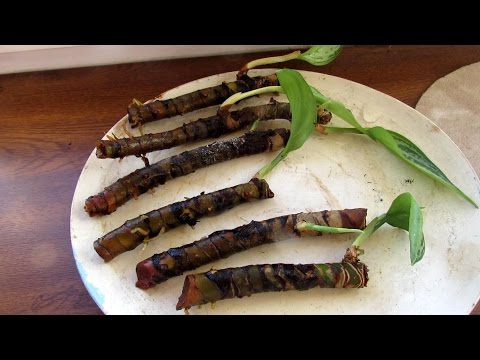

Watch this video on YouTube
Growing from seeds
If you take care of this plant correctly, then it is quite possible that it will bloom in the summer.It should be noted that the veil-inflorescence is not of particular decorative value. It happens that such a plant self-pollinates, as a result, ruby or orange berries are formed. Wait until the fruits ripen directly on the bush, after which they can be used for sowing. It should be noted that with this method of reproduction, it is not always possible to preserve the varietal characteristics of the aglaonema.
From the pulp of the fruits, you need to extract the seeds, which are thoroughly washed under running water, and after that they are sown in bowls filled with a mixture of sand and peat (1: 1). You should not store the seeds, because they quickly lose their germination.
Crops must be removed to a warm place and systematically watered. The seedlings will appear relatively quickly. As soon as the first true leaf plates are formed, the plant should be cut into small separate pots. After the bushes grow up, they are transplanted into larger pots. After 3 or 4 years, you will already have developed bushes.
Division
This plant is also propagated by dividing the rhizome, which is produced during transplantation.
Possible problems
- The foliage shrivels and the tips turn brown... The room has an excessively low air humidity, because of this, various harmful insects can also settle on the flower. Do not forget to regularly moisten the bush from a spray bottle, and also pour water into the pan, having previously poured peat or expanded clay into it.
- Twisting the foliage... This is observed with a sharp drop in temperature or if the flower has been exposed to a draft. As a rule, in addition to curling on the plates, the edges turn brown.
- The foliage has white-yellow spots... They appear as a result of sunburn. The bush is removed in partial shade and wait until it cools down, and then its foliage is moistened with water at room temperature.
- Slow bush growth, foliage becomes brown... The plant was watered with cold or hard water. Water aglaonema only with water that has settled well for at least 24 hours. To soften the water, 0.2 grams of oxalic acid is poured into 1 bucket, everything is stirred well and left for 24 hours. You can also soften the water with citric acid.
Of the pests, spider mites, mealybugs, aphids, whiteflies and thrips can settle on the plant.
Types of aglaonema with photos and names
Aglaonema brilliant (Aglaonema nitidum)
This species comes from damp forests located on the plains of Thailand, Malaysia, Sumatra and Kalimantan. The height of the trunk is about 100 cm. The length of the rich green or dark green leaf plates is about 45 centimeters, and the width is ―20 centimeters. Their shape is oblong, and the front surface is shiny. The inflorescences consist of 2–5 flowers. The length of the cob is 60 mm, it is covered with a blanket of almost the same length. The berries are white.
Aglaonema changeable (Aglaonema commutatum), or aglaonema changeable
The plant is native to the Philippines and Sulawesi. The length of the straight stem can vary from 0.2 to 1.5 m. The long-petiolate leaf plates reach 30 centimeters in length and 10 centimeters in width. Inflorescences consist of 3–6 flowers. The length of a thin cob is 60 mm, it is covered with a longer greenish veil. When red fruits are formed, the bush looks more impressive. Varieties:
- warburgii - white stripes run along the lateral veins on the leaf plate;
- elegans - on the elongated oval greenish leaf plates there is a pattern of light green color;
- maculatum - on the surface of dark green, elongated oval leaf plates, there are white strokes.
Aglaonema oblong-leaved (Aglaonema marantifolium)
A plant native to the rainforests of the tropical regions of Singapore and the Philippines, as well as the islands of Borneo and Penang. The length of the large dark green leaf plates is about 0.3 m. They have petioles reaching 0.2 m in length. Some varieties have a gray-silver pattern on the foliage surface.
Aglaonema painted (Aglaonema pictum)
A native of the humid forests found on the islands of Sumatra and Borneo. The height of the branching trunk is about 0.6 m. The shape of the large dark green leaf plates is elongated and elliptical. On their surface, specks of gray color are unevenly located. In some varieties, these spots are silvery-white. The berries are red.
Aglaonema ribbed (Aglaonema costatum)
Originally from the humid forests found in the tropical part of Southwest Malaysia. This herbaceous plant has a trunk branching at the base. The length of the leaf plates is about 20 centimeters, and the width is 10 centimeters. On the surface of green dense foliage there are specks and strokes of white color.
Aglaonema modestum, or moderate aglaonema
Originally a species from humid forests located on the slopes of the tropical parts of Indochina and the Malay Archipelago. The height of the branching trunk is about 50 cm. The oval green leaves have a blunt base and a sharp apex, they reach 20 centimeters in length and 9 centimeters wide. On each side of the central vein there are several pieces of convex lateral veins. Red berries are similar to dogwood fruits.

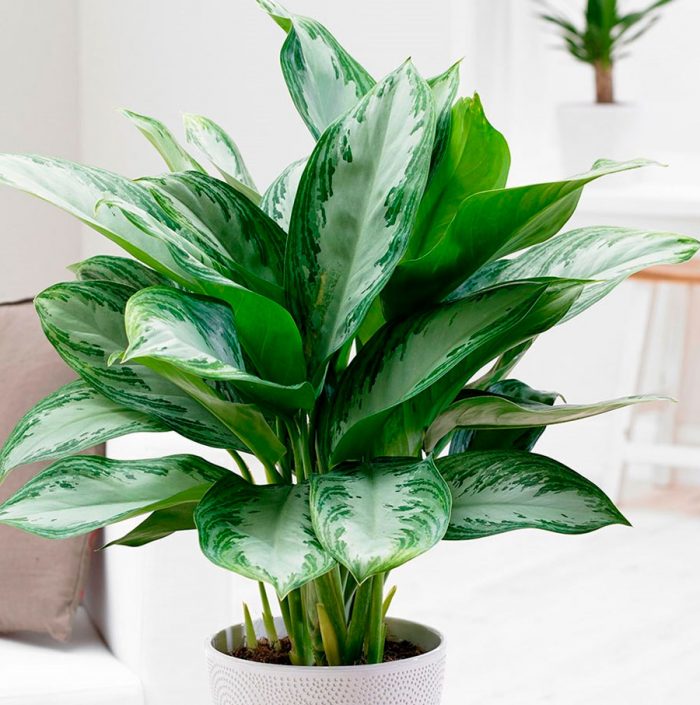
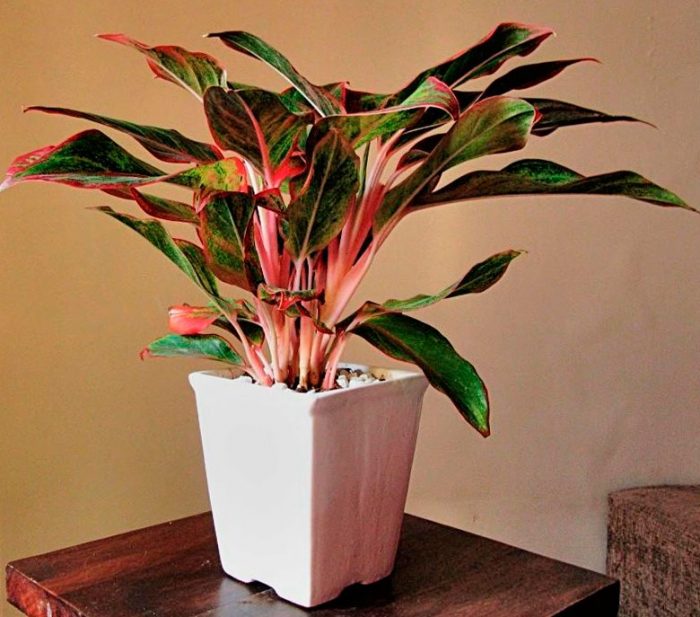
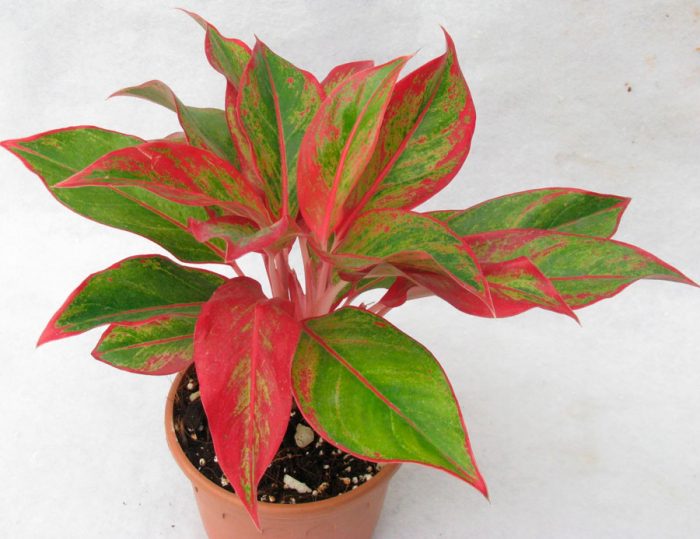
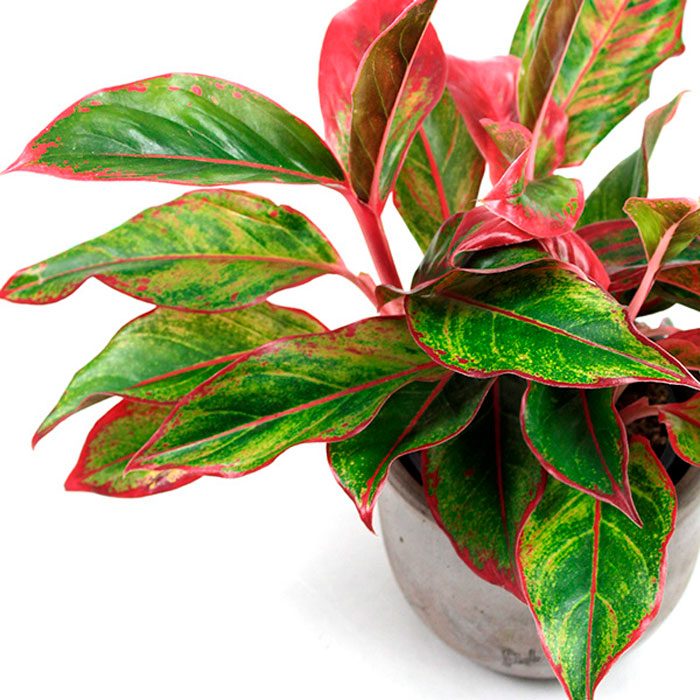
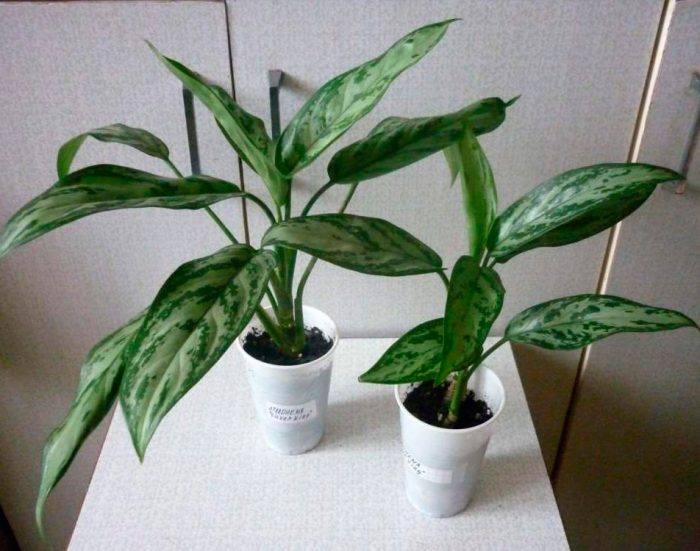
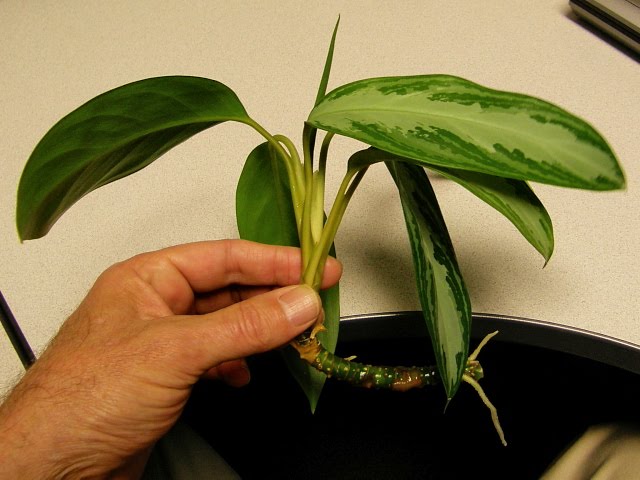
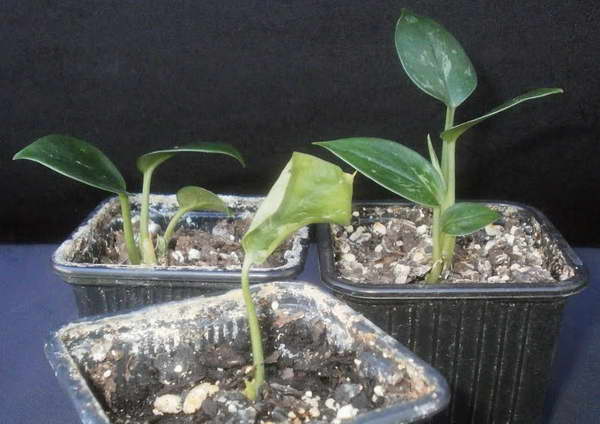
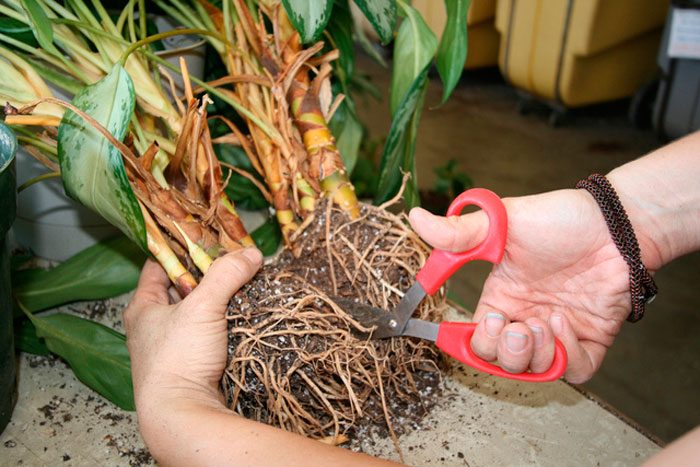
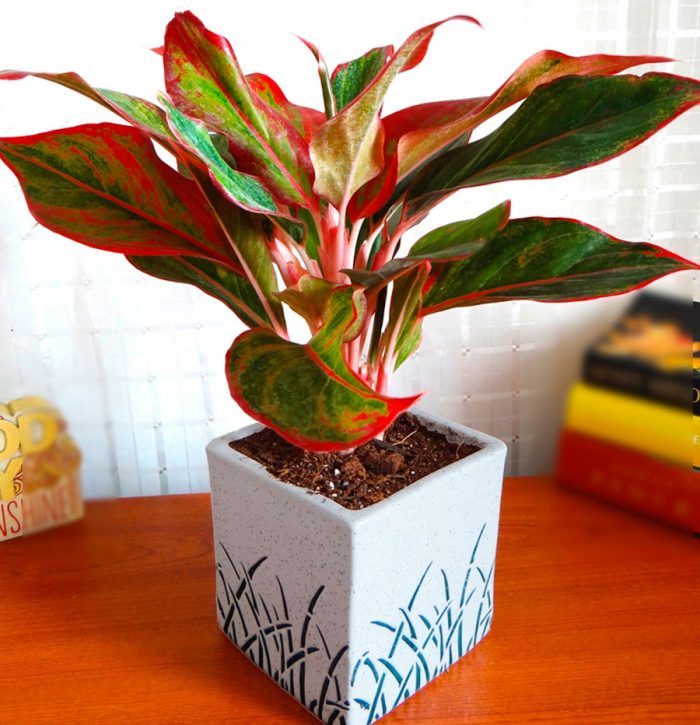
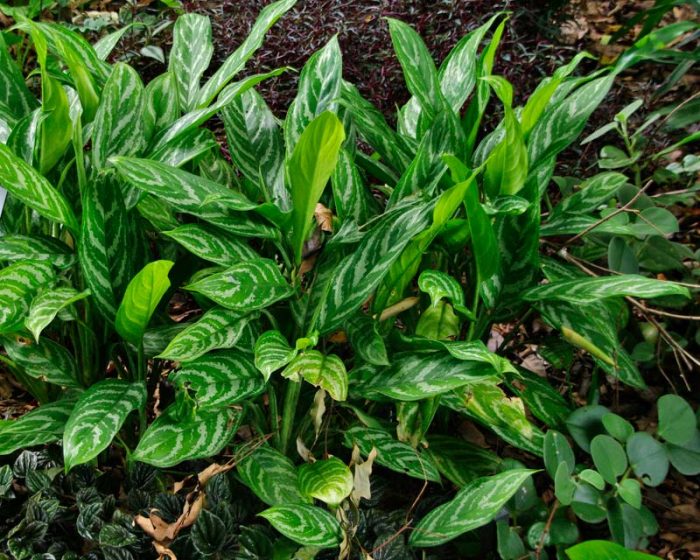
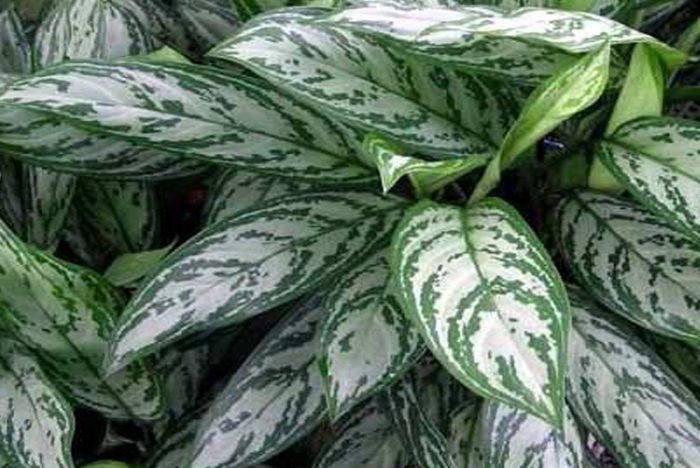
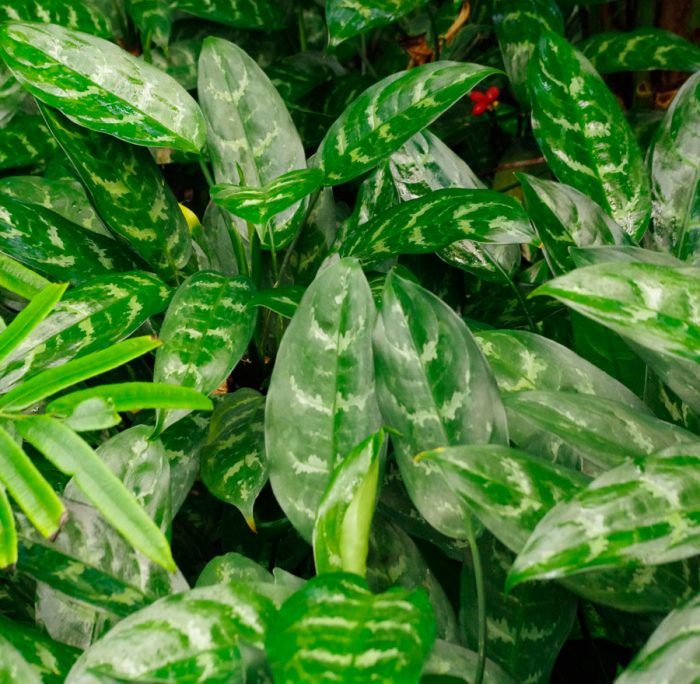
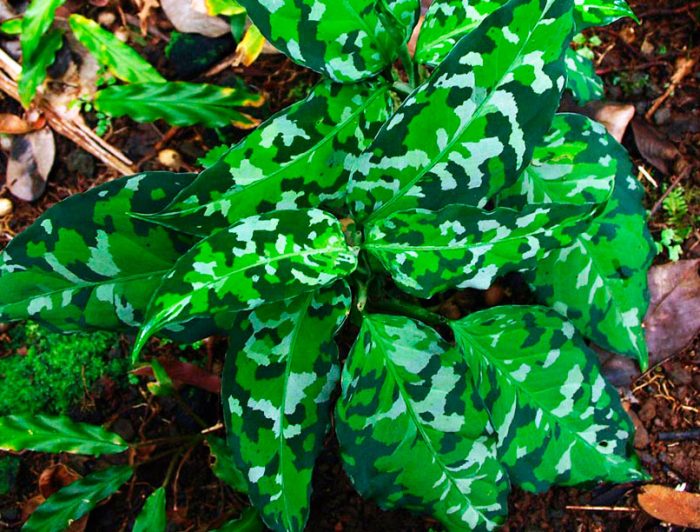
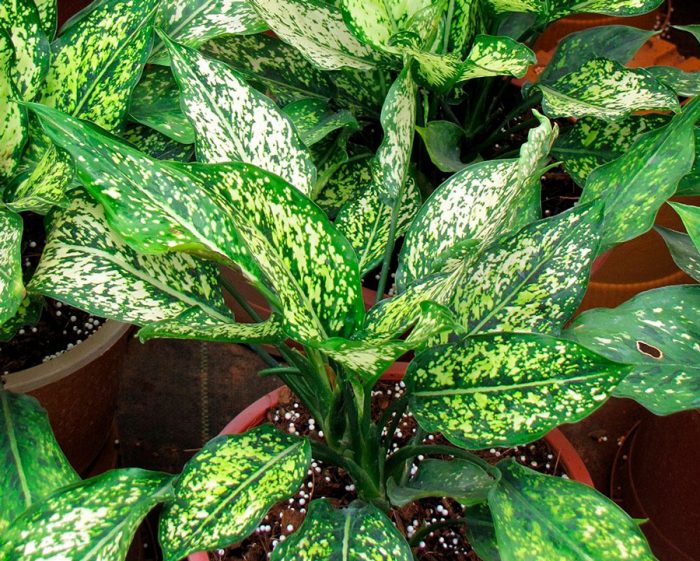
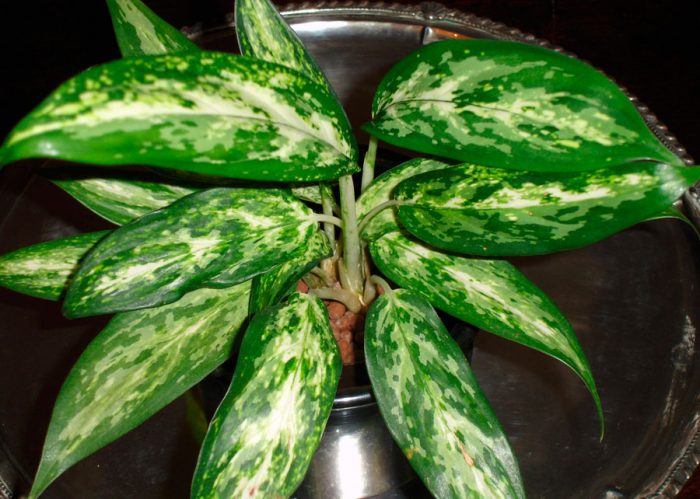

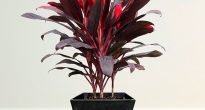
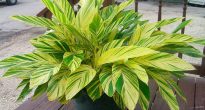
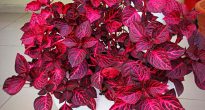
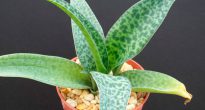
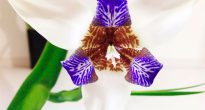
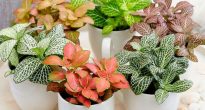
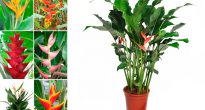



I love aglaonema. But I can't raise him. help to grow a beautiful flower.
I have it for 2 years on the window, I don't care at all, I water it 2 times a week, right now, some similar embryos that want to bloom into a flower.
I have been growing aggloenema for two years now, but lately the leaves are turning yellow. What should I do